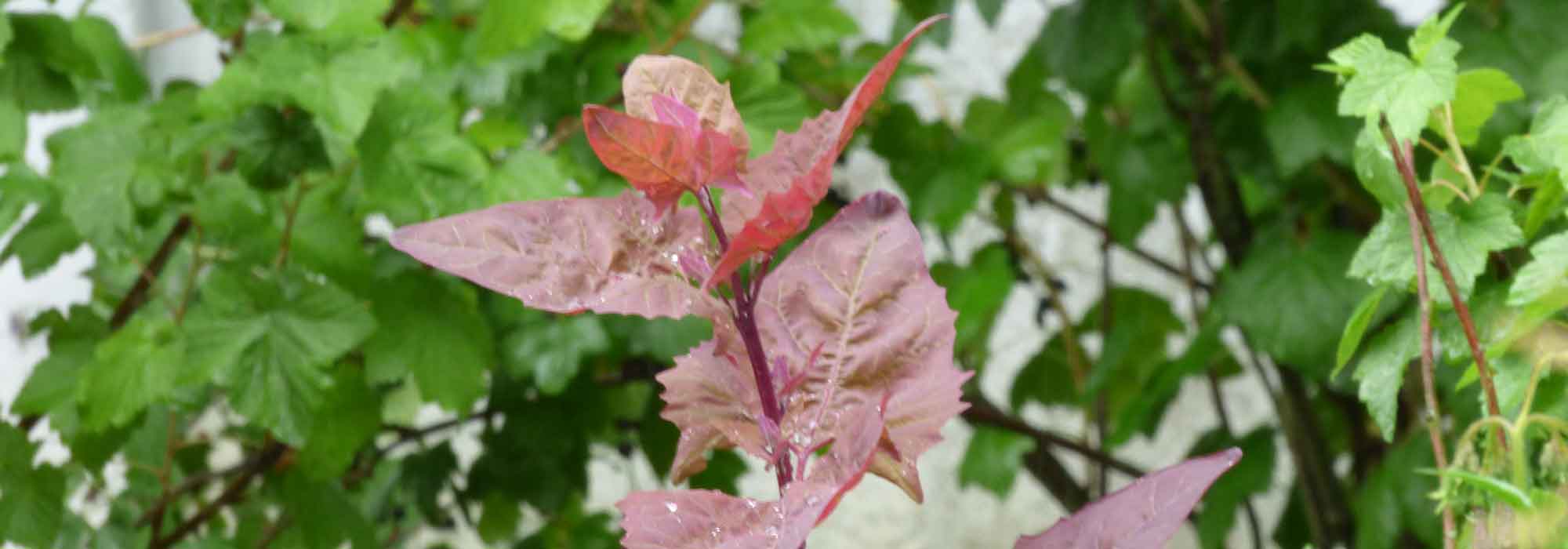
Orache: sowing, growing, harvest
Contents
Orache in a nutshell
- Orache, or Atriplex hortenis, is a leafy vegetable in the same family as spinach and is eaten the same way.
- In the vegetable garden, orache complements spinach well as it is harvested in summer, a period when spinach is less productive.
- It is a prolific vegetable plant that grows to over 2 metres tall and self-seeds easily; it can even become invasive at times.
- Easy to grow, orache thrives in any soil, even poor soil, but will give better yields in humus-bearing, light and cool soil.
- It is an ideal plant for starting a vegetable garden; it germinates quickly, resists diseases and pests well, and can be harvested within two months of sowing!
A word from our expert
Orache is a somewhat forgotten vegetable from the spinach family. It was dethroned by the latter during the 19th century because its flavour is less pronounced. The mildness of orache, however, is better appreciated by children. It is eaten in the same way as spinach and complements it through the year because, while spinach offers a good crop in the off-seasons, orache is abundant in summer.
This ancient vegetable is easy to grow. It will grow in any soil, even poor, but prefers a humus-bearing, light and cool soil. These conditions limit its bolting to seed. Varieties, few in number, have different appearances: the most common is red orache, with red to purple foliage it adds colour to both garden and plate, reaching 2.5 metres in height at flowering. Blonde orache, smaller, with light green foliage, self-seeds very abundantly. Finally, green orache, a rarer variety in gardens, has more puckered foliage than the other two.
Note that orache can become very invasive: to contain it, harvest seeds or cut flower stalks before ripeness, unless you wish to save your own seeds.
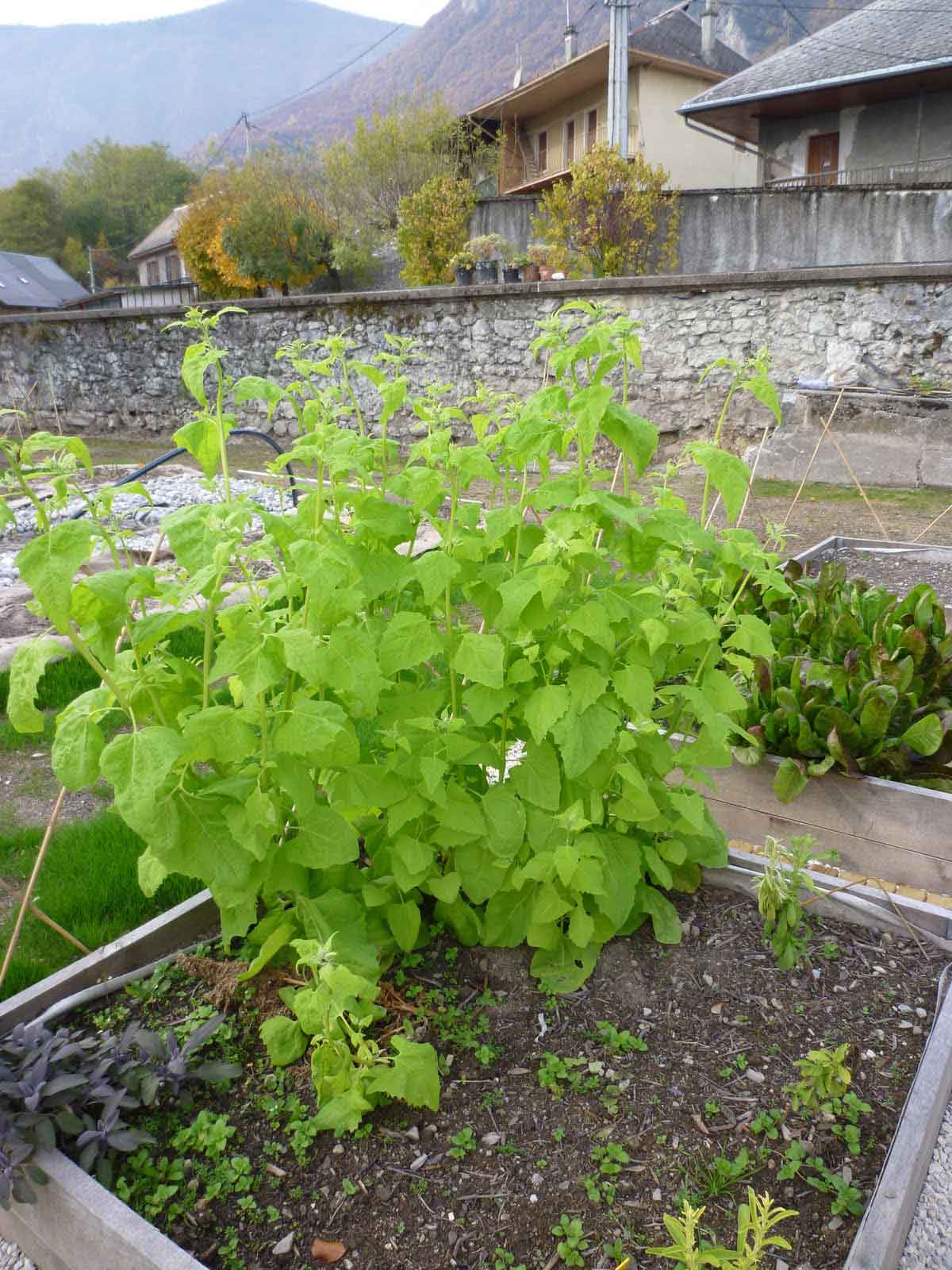
Description and botany
Botanical data
- Latin name Atriplex hortensis
- Family Chenopodiaceae
- Common name Orache
- Flowering Annual
- Height 6 years
- Exposure Sun or partial shade
- Soil type Fresh, light, previously manured
- Hardiness Hardy
Orache is a leafy vegetable of family Chenopodiaceae, native to Central Asia and Siberia. It was known and cultivated in central Europe and by Greeks and Romans, and was commonly grown in the Middle Ages, at that time called hortulana (from Latin hortus, garden) before being supplanted by spinach.
It remained widely cultivated into the 19th century and inherited many names: Lady of the Gardens, Garden Orache, Cultivated Orache, Giant Spinach, False Spinach, Spanish Wheat, Cabbage of Love, the Prude Woman, the Coquette or Fat Hen!
Its Latin name is Atriplex hortensis, a genus that includes around a hundred species. The genus name, Atriplex, comes from the Greek trephein and means “to nourish”. The specific epithet, hortensis, comes from Latin and means “from the garden”.
Orache is an annual plant with rapid and spectacular development, its habit is upright and its height ranges from 1 to 2.5 metres. Its channelled stem is glabrous and green, bearing large alternate leaves of hastate-triangular shape, entire or dentate, the colour varying according to variety. At the end of the day, the upper leaves raise to protect the apical shoot. It is a plant sensitive to increasing day length, which causes it to produce a long flowering stem bearing male and female flowers grouped in panicules of a greenish colour. It is an allogamous plant whose flowers are wind-pollinated.
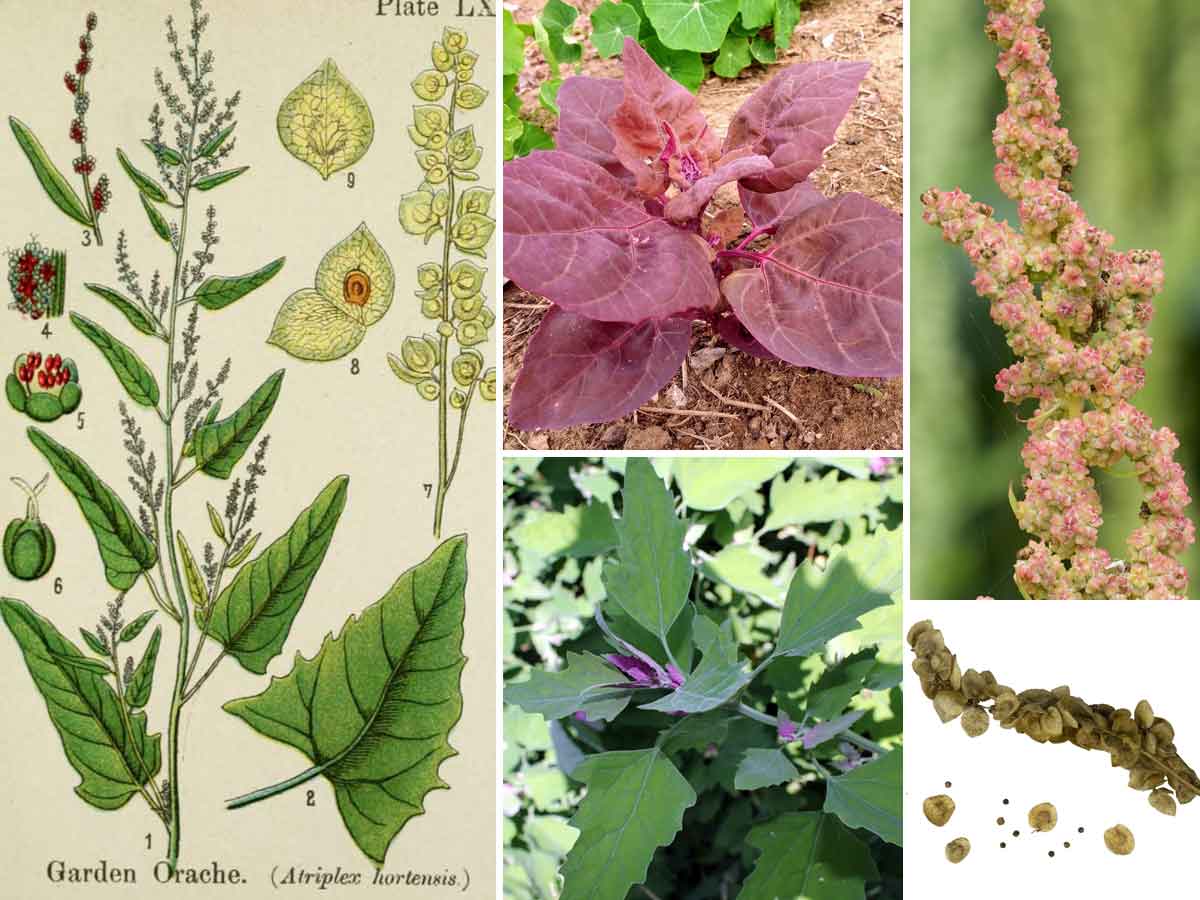
Botanical plate of Atriplex hortensis – red and green orache in leaf – flowering and ripe seeds
Cultivated varieties
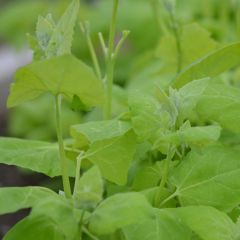
Blonde Orach - Ferme de Sainte Marthe seeds
- Height at maturity 1,50 m
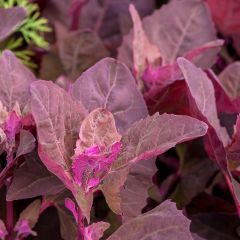
Red Orach
- Height at maturity 1,50 m
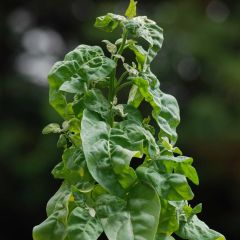
Green Orach - Ferme de Sainte Marthe seeds
- Height at maturity 1,50 m
Discover other Orache - Saltbush seeds
View all →Available in 1 sizes
Available in 1 sizes
Available in 1 sizes
Available in 1 sizes
Available in 1 sizes
Available in 1 sizes
Sowing orache
Where and when to sow orache?
Sowing of orache takes place from March to August, directly in open ground. Staggered sowings allow harvest of leaves all year round. Germination temperature for orache is between 15 and 20°C; emergence generally takes between 6 and 10 days.
How to sow orache?
To sow orache in vegetable patch :
- Draw a furrow 1 to 2 cm deep in rows 40 cm apart,
- Sow in small groups of three seeds, spaced 40 cm apart in all directions,
- Cover seeds with soil and firm down with back of rake,
- Water gently using watering-can rose.
When young plants have 3 to 4 leaves, carry out a thinning, leaving only the best young plant.
It is also possible to sow more densely to harvest young plants entire before they reach complete ripeness.
Growing, care and companion planting
Orache is an undemanding vegetable that will make do with fairly poor or previously manured soil. However, fresh, light and humus-bearing soil is preferable for higher yields. It can be grown in sun or partial shade. Its only weakness is its tendency to bolt rapidly to seed during dry spells. To remedy this drawback, we recommend staggering sowing over time.
Routine maintenance is limited to regular weeding and hoeing. Although drought-tolerant, adding a protective mulch helps to limit premature bolting. To encourage leaf development, pinch out the tips of the stems from time to time; bolting is thereby delayed.
Because of its vigorous summer growth, orache provides shade to neighbouring crops. It will therefore be beneficial to beetroot, lettuces, radishes and turnips. In contrast, it is a poor companion for potatoes, as it would inhibit their growth.
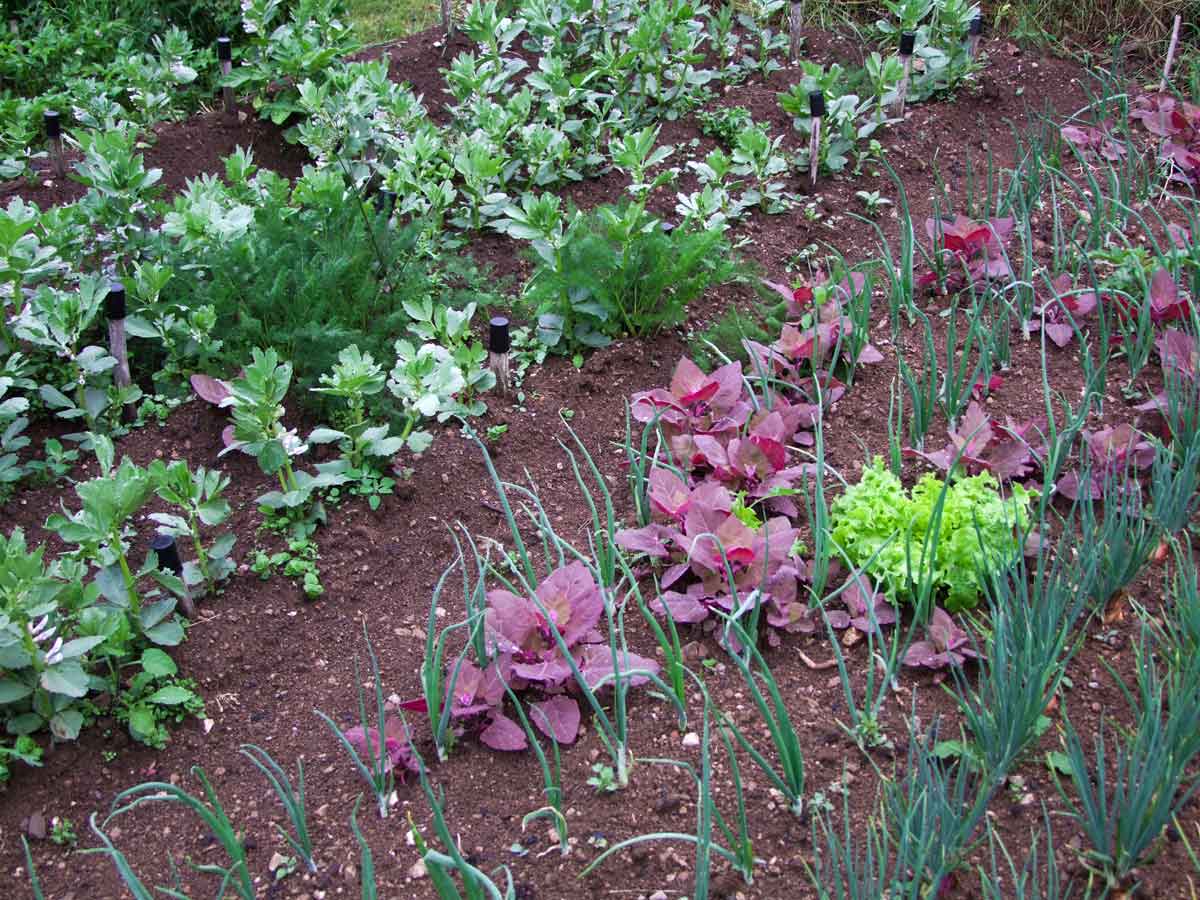
Orache self-seeds; here it grows among onions. They can be harvested entire to avoid competing too much with onions.
Harvesting and storing
Orache leaves are picked as they develop, according to needs. Note that young tender leaves are best and that the plant produces new leaves after they have been cut. First harvests usually occur 2 to 4 months after sowing. You can also cut the entire plant while it is still small.
Orache does not keep very well in the fridge because it tends to soften. It is preferable to consume it a few hours after harvest. However, you can freeze it after blanching it for 3 minutes in boiling salted water.
Uses and nutritional benefits
Orache leaves are prepared like spinach: they can be eaten raw in salads or cooked quickly covered, baked in a gratin, used in a pie, or pan-fried. Their flavour pairs well with sorrel. Young leaves have a slight iodine flavour and are best eaten raw in salads.
It is a low-calorie vegetable, high in fibre, vitamin C (more than spinach) and minerals. The red variety contains anthocyanins, antioxidant molecules. Given its oxalic acid content, it should nevertheless be consumed in moderation by people prone to kidney stones.

A beautiful and appetising splash of colour in salads with red orache.
Useful resources
- Discover our range of orache seeds in our shop
- Orache in the kitchen: plant-based recipes for an ancient vegetable to rediscover
- Video: Ancient vegetables: orache and fat-hen
- Subscribe!
- Contents
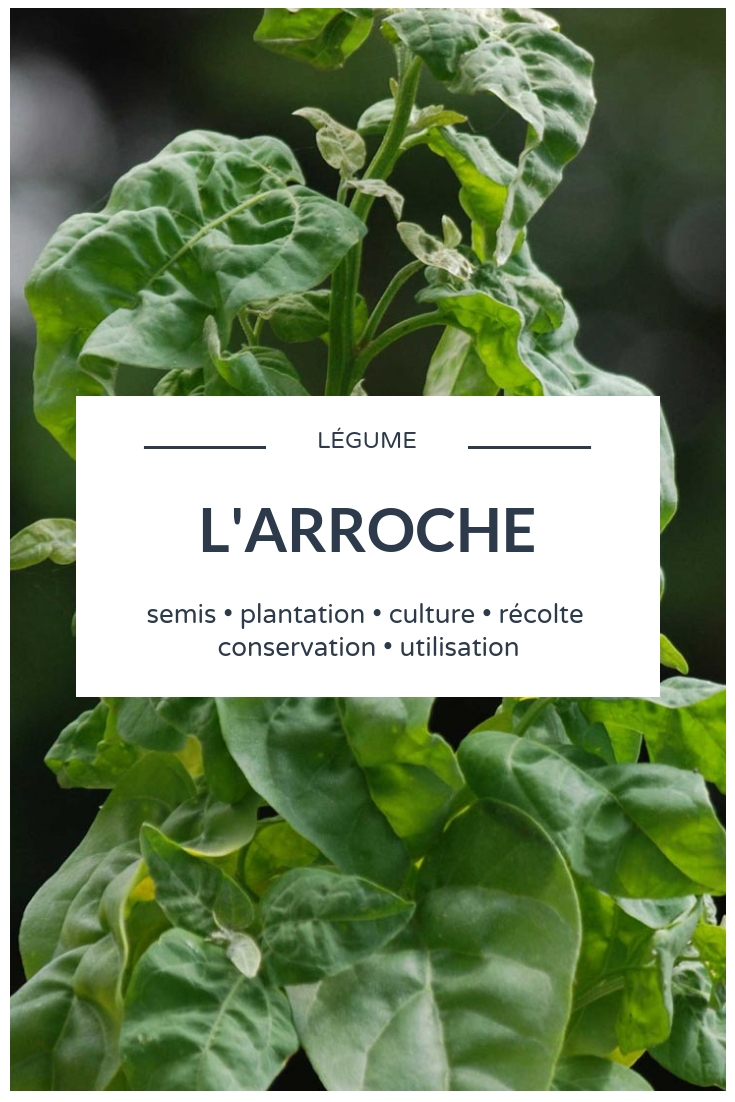
































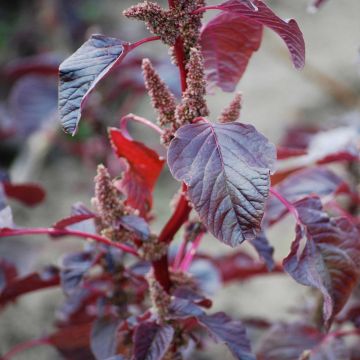

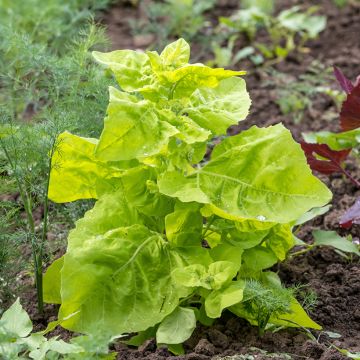
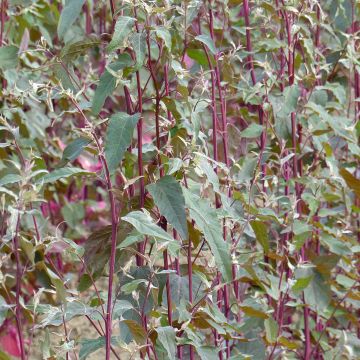

Comments